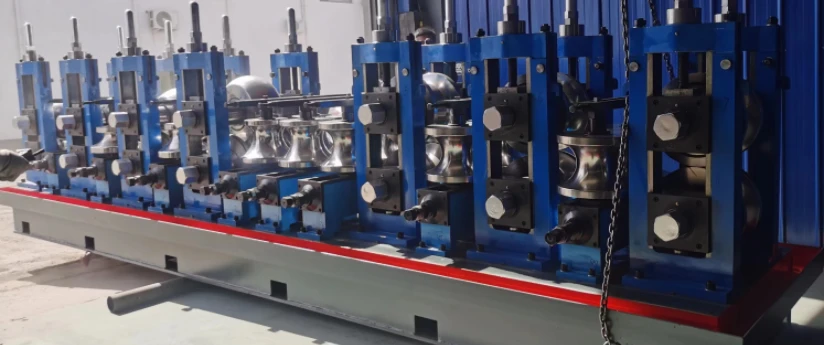Exploring the Benefits and Applications of Cold Rolling in Aluminium Processing Techniques
Cold Rolling of Aluminium A Comprehensive Overview
Cold rolling of aluminium is a widely utilized manufacturing process that transforms aluminum ingots or slabs into thin sheets, strips, or foils at room temperature. This technique not only enhances the mechanical properties of aluminium but also improves surface finishes, making it an essential method in various industries. This article explores the cold rolling process, its advantages, applications, and technological advancements.
The Cold Rolling Process
The cold rolling process involves the reduction of metal thickness by passing it through a series of rollers at ambient temperatures. Unlike hot rolling, which occurs at elevated temperatures and can lead to oxidation or scaling, cold rolling preserves the aluminium's natural oxide layer, ensuring superior surface quality. The process typically begins with a large cast aluminium ingot or slab that is first processed through hot rolling to achieve preliminary thickness reduction.
Once the material is at a manageable thickness, it undergoes cold rolling. This process can be performed using different types of rolling mills, including two-high, four-high, and tandem mills. During cold rolling, the aluminium alloy is subjected to significant amounts of plastic deformation, which increases its yield strength through strain hardening. This transformation results in a more stable product with enhanced mechanical properties, such as higher tensile strength and better resistance to deformation.
Advantages of Cold Rolling
Cold rolling aluminium presents numerous benefits, making it a preferred choice in various applications. One of the primary advantages is the improvement in mechanical properties. As mentioned, cold rolling increases tensile strength, making aluminium sheets and foils stronger and more durable. Additionally, this process has a significant impact on the surface quality of the finished products, producing a smooth, fine surface finish that minimizes the need for further processing.
Another benefit of cold rolling is dimensional accuracy. The controlled environment of the rolling process provides a high level of precision in thickness, width, and flatness. This is crucial for industries that require exact specifications, such as aerospace and automotive manufacturing. Furthermore, using cold rolling minimizes material waste, as the process allows for tighter tolerances and reduces the need for excessive machining.
cold rolling aluminium

Applications of Cold Rolled Aluminium
The applications of cold rolled aluminium are vast and varied, emphasizing its versatility and usability across multiple sectors. In the aerospace industry, for example, cold rolled aluminium is used in the construction of aircraft components due to its lightweight yet strong characteristics, contributing to fuel efficiency. Similarly, the automotive sector extensively employs cold rolled aluminium for body panels, engine components, and wheels, enhancing the overall performance and safety of vehicles.
In the construction industry, cold rolled aluminium is used in framing, roofing, and cladding materials, providing not only strength but also aesthetic appeal due to its smooth surface finish. Furthermore, the electrical engineering sector benefits from cold rolled aluminium, particularly in the production of electrical conductors, where the material's conductivity is paramount.
Technological Advancements
Recent technological advancements in cold rolling processes have led to further improvements in efficiency and product quality. Innovations such as the use of advanced control systems enhance the precision of the rolling process, while new techniques like lubricated rolling have decreased friction, leading to better surface finishes and reduced wear on rolling equipment. Additionally, the development of high-strength aluminium alloys has expanded the possibilities of cold rolling, enabling manufacturers to produce even lighter and stronger materials for demanding applications.
Conclusion
Cold rolling of aluminium is a critical manufacturing process that contributes to the production of high-quality materials for various industries. With its numerous advantages, including improved mechanical properties, enhanced surface quality, and precise dimensional accuracy, cold rolled aluminium has become indispensable in modern manufacturing. As technology continues to advance, the cold rolling process will likely evolve further, enabling the production of even more innovative and efficient aluminium products.
-
Top Straightening Machine Supplier – High Precision Solutions for Metal ProcessingNewsJun.10,2025
-
High Efficiency Rotary Shear Machine for Precision Cutting Versatile Rotary Shear Shredder & Cordless OptionsNewsJun.10,2025
-
High-Precision Cold Rolled Steel Machine for Quality ProductionNewsJun.09,2025
-
Metal Tube Making Machine – High Precision & AutomationNewsJun.09,2025
-
Automated Lami Tube Manufacturing Machine High Output & PrecisionNewsJun.09,2025
-
Premium Roll Forging Machines High-Precision Metal Forming SolutionsNewsJun.09,2025


